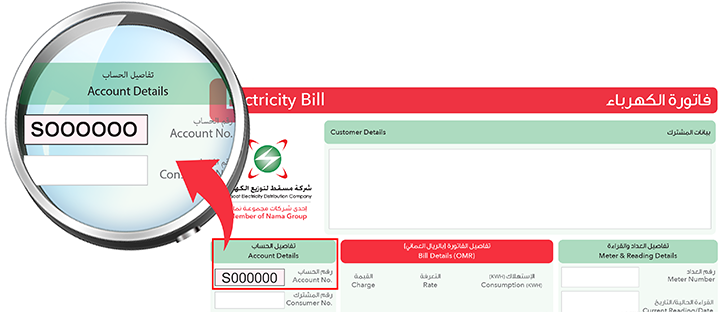

Muscat: The government will lift the subsidy on water and electricity in a planned manner over a span of five years. The government also will activate the social protection system for electricity and water sectors to support eligible families.
It is one of the ambitious initiatives of the medium-term fiscal balance plan (2021-2025) to enhance the efficiency and sustainability of the two sectors.
It is aimed at raising the efficiency of government spending, establishing financial sustainability rules, and linking it to the social protection system keeping in mind to support the entitled families.
To ensure that support reaches the eligible families, the government has developed a National Subsidy System (NSS), which includes fuel, electricity, and water tariff subsidies, to provide protection to citizens who are most vulnerable to the financial burdens in the wake of some adverse financial conditions.
According to officials in the Ministry of Finance, people wishing to benefit from this system and those who meet the conditions can start applying for the support from Sunday online till next January through the NSS website.
The electricity and water sectors witnessed remarkable growth over the past decades. It led to an increase in the volume of investment in both sectors to more than RO 8 billion between 2005 and 2019.
Electricity accounts witnessed an increase of 141 percent, while the amount of supply increased by 253 percent. As for water, the accounts witnessed an increase of more than 187 percent, while the total water distributed jumped to over180 percent from 2010 to 2019.
Besides investments in infrastructure, the government has continued support to all consumers over the past decades by subsidizing tariffs at a large percentage. As a result, average account consumption has increased significantly for all subscribers.
Currently, subsidy on electricity and water is provided to all the consumers in the Sultanate regardless of their standard of living. The subsidy includes non-residential categories such as industrial, governmental, agricultural, and others.
For the residential category, however, the electricity tariff in the Sultanate has not changed since 1987 and has not been affected by changes in economic conditions such as inflation, fluctuation in oil prices, increase in the cost of supply, and the growth in demand for electricity.
This led to an annual increase in subsidies, as it increased from RO 650 million in 2016 to RO 750 million in 2020, thus constituting 5 percent of the state's general budget and about 20 percent of the expected deficit during this year.
If the government does not take any steps on the subsidy, it is expected to reach RO 900 million in 2025.
According to the reorientation program, new tariffs for electricity and water services will be applied from the beginning of the next year to five years, while the subsidy for citizens (not exceeding two accounts) will continue.
The new tariff structure includes the following categories: 1- Big consumers category that includes all subscribers of all the categories except the residential category who consume 100 megawatts per hour in a year or more, and the cost-reflective tariff (CRT) is applied to all subscribers in this category.
Second is the Non-residential consumption category. It includes all the subscribers' categories (industrial, commercial, government, and tourism) to be merged from a single tariff.
Also, the tariff for agricultural and fishery activities has been modified and will continue to be applied as a special tariff for these two sectors.
The third is the Residential consumption category. In this category, the tariff was divided into the citizen’s account tariff, the resident’s account tariff, and additional accounts. The citizen’s account tariff will be applied to accounts registered with the names of citizens, not exceeding two accounts per citizen, and the resident’s account tariff and additional accounts will be applied to registered accounts with the names of residents.
As for water, the new tariff structure includes the following categories: 1- Non-residential consumption category. It includes all non-residential uses.
The second water category is the Residential consumption category that is divided into the citizen’s account tariff. The resident’s account tariff and additional accounts, as the citizen’s account tariff, will be applied to accounts registered with the names of citizens, not exceeding two accounts per citizen, and the resident’s account tariff and additional accounts will be applied to registered accounts with the names of residents and additional accounts that exceed the two accounts for citizens.
REDIRECTED SUPPORT
Many countries have changed the mechanism of providing support to programs that seek to direct support to the beneficiaries by identifying the families most vulnerable to being affected by financial policies, compared to the current support mechanism.
As for the mechanism for providing support to those who are eligible in the national subsidy system, it will be through direct subsidies representing 33 percent of the value of the bill, up to a specific consumption ceiling (4000 kWh/month) for electricity. The same mechanism will be applied to water in the coming stages.
The results of the 2019 families’ income and expenditure survey were pillars in developing a methodology for entitlement to support based on two criteria: Total family income and the number of family members.
The categories covered by the subsidy include the following: If the monthly family income is less than RO 500, regardless of the number of family members. If the family income is RO 750 or less and the number of family members is five or more, if the income is RO 1000 or less and the number of members is seven or more, if the income is RO 1250 and the number of members is nine or more. But if the income is more than 1250, the family is not covered by the support, regardless of the number of family members.
Oman Observer is now on the WhatsApp channel. Click here



